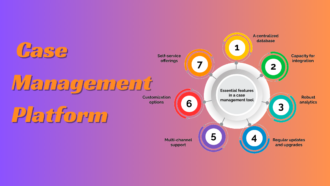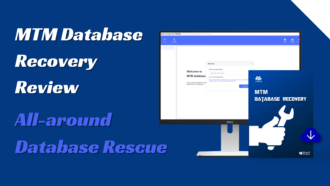Optimizing Test Data Management for Effective Software Testing
In today’s rapidly evolving software development landscape, ensuring the quality and reliability of software applications is of paramount importance. Comprehensive and rigorous software testing plays a vital role in identifying and addressing potential defects and vulnerabilities before they impact end users. One critical aspect of successful software testing is efficient test data management.
Test data management
Test data management refers to the process of acquiring, organizing, and manipulating data used in software testing activities. It encompasses a wide range of tasks, including data generation, data provisioning, data masking, and data privacy. Effective test data management is essential for creating realistic testing environments, replicating real-world scenarios, and achieving accurate and meaningful test results.
Different IT companies encourage employees to write blogs on test and technical topics to share their knowledge and experience. So we can get an opportunity to read a diverse set of topics written by people of varying and practical experiences.
Let’s check out today’s article about the need for full-fledged test data, re-using test data over time to ensure they have not been corrupted, and how test data should take into account: positive, negative, blank, and boundary values to ensure they adequately test the application and about effective outsourced software testing.
In addition to all of these, it is very important to focus on your test data generation, depending on the type of testing undertaken. If you see, for functional testing you want a variety of test data covering all the points mentioned above. For performance testing too, the same will hold good, but when you scale and increase your load, you would want to ensure that you maintain diversity in your data even when you deal with volumes.
Optimizing Test Data Management for Effective Software Testing
Break it down by type
For security testing, focus more on the negative data sets or rather illegal ones which you would not expect your regular users to use. Scripts and SQL statements are largely used here like how a hacker would gain access to the internals of the application.
In the case of localization testing, the tester is focusing on creating real-time locale-specific inputs for which he might have to use translator tools. The tester will need to pay special attention to the currency, date/time formats, text length, etc. for the test data that he creates here. Prior to localization testing, when globalization and pseudo-localization testing are done; the tester is focused more on creating gibberish or garbage data which is non-English to start off with.
In cases of accessibility and usability testing, the tester is more focused on using tools like screen readers, narrators rather than focusing a lot on actual test data. For database testing scenarios, you may not only need test data but also have them populated into the database, for ease of access. So, if you try to see a pattern here, you are really customizing your test data depending on the type of testing you undertake with a goal of finding as many bugs as possible.
Since test data creation takes a lot of time, it is a good idea to use tools wherever possible with of course due diligence done by the tester to ensure the validity of such automated test data that is created. Especially for scenarios such as user account and password creations where typically a huge volume of data is needed, a lot of freeware tools are available.
For every test pass, it would help to take care of the following checklist:
- Understand the focus of the test pass and decide what tests are required.
- Evaluate to see what existing data can be reused.
- Ensure validity of such existing data.
- Analyze gaps for any new data that needs to be created.
- Analyze the data sources (whether data exists in XMLs, local files, databases, reside in another application, etc.) and see if any migrations are needed.
Like test case maintenance effort, test data maintenance is a good practice to take on between test passes. The tester can look at any new tools in the market that can be used, any test data cleanup that is needed, any new data that can be created, and any user inputs from the field/bugs they have filed for which test data is very unique that you can add it to your data repertoire, etc. Such proactive tasks go a long way in saving you time and effort in your subsequent test passes and more importantly, help you find realistic and good bugs.
Conclusion
At certain times, you as a tester will also be required to share your test data with other teams in the product group including your development team to help them reproduce issues. Similarly when bug bashes are held, to save time for everyone, along with the basic instructions some test data might also come in handy for the group to use. That said, you need to draw your balance here in how much test data you share with your team, because the test data goes a long way in finding some core bugs; so you would not want to impact the team’s creativity and limit the bugs they find by sharing all of your test data.
So, chalk yourself a plan on how and what kind of data you want to generate, use and share with the goal of enhancing your product quality and containing defects as much as you can before product release.
In summary, optimizing test data management is an integral part of effective software testing. By employing efficient data acquisition, organization, and manipulation techniques, testing teams can enhance the quality and reliability of their software applications. This, in turn, results in improved customer satisfaction, reduced maintenance costs, and a competitive edge in the ever-evolving software market.


















